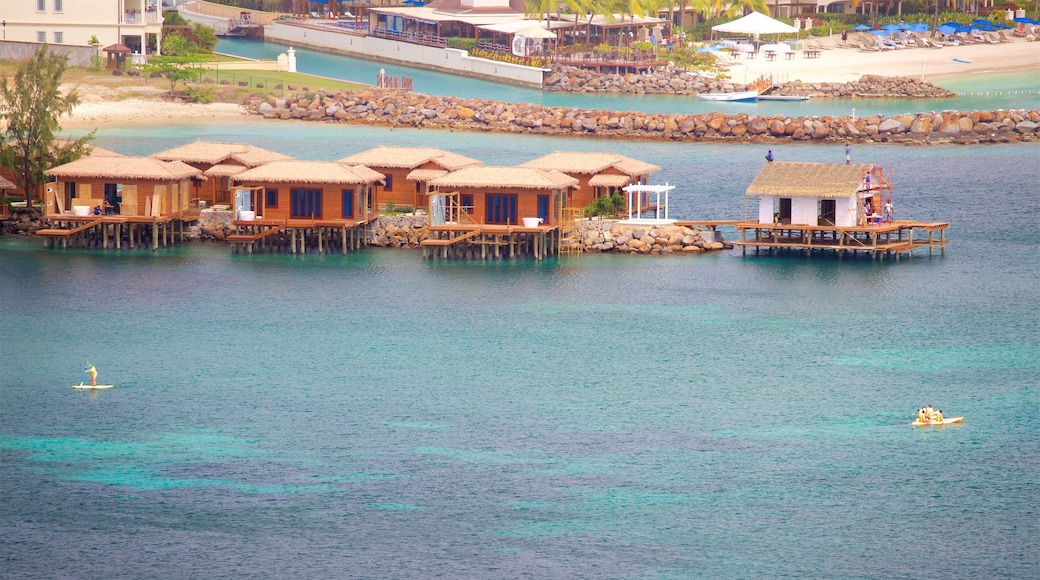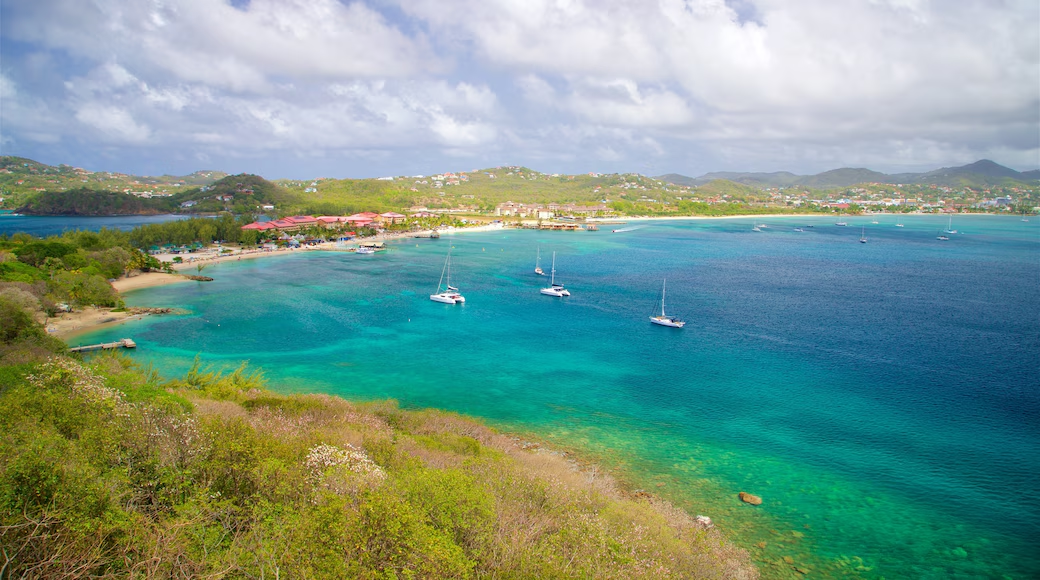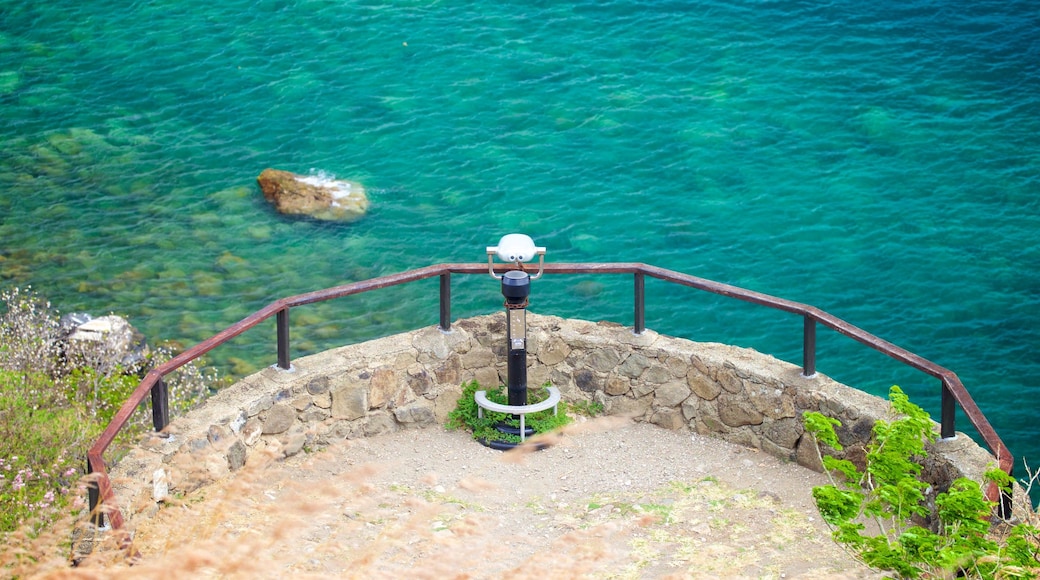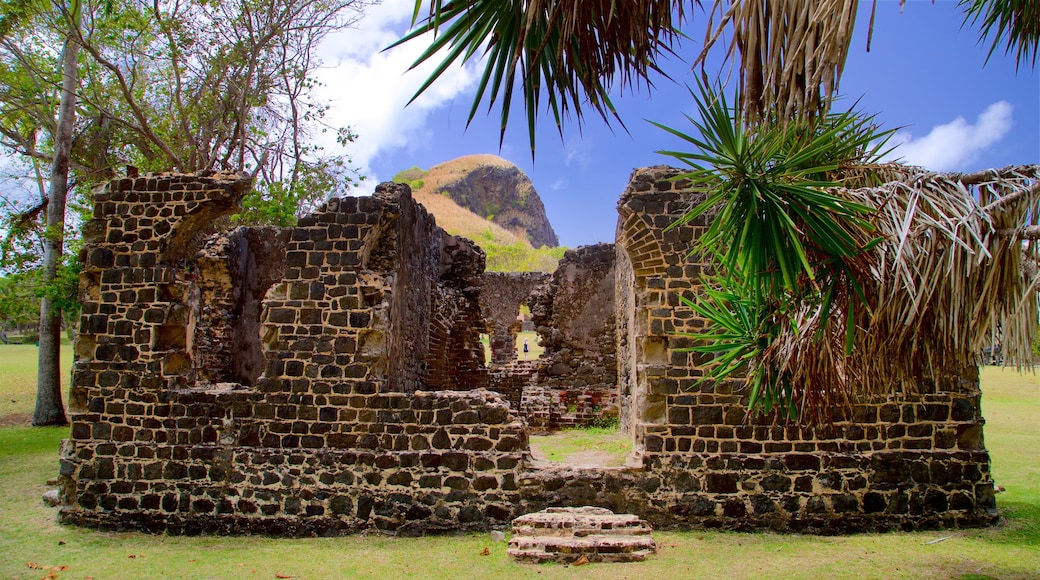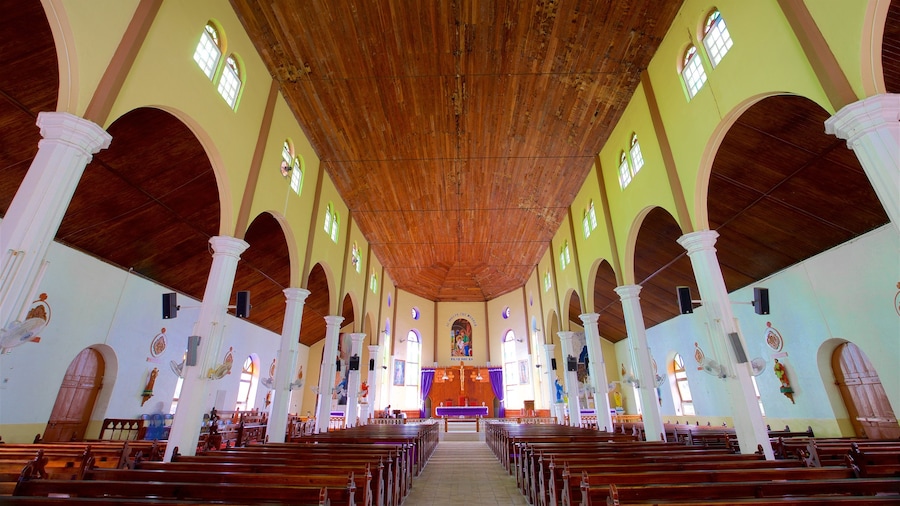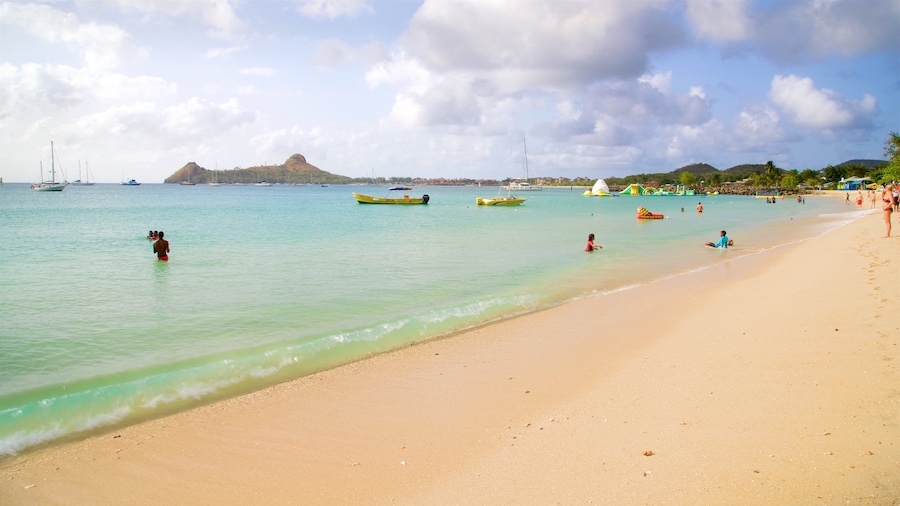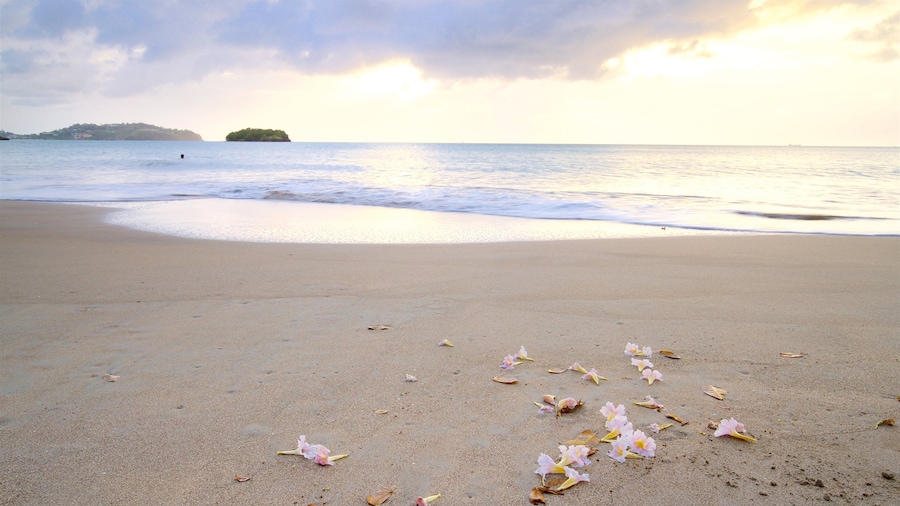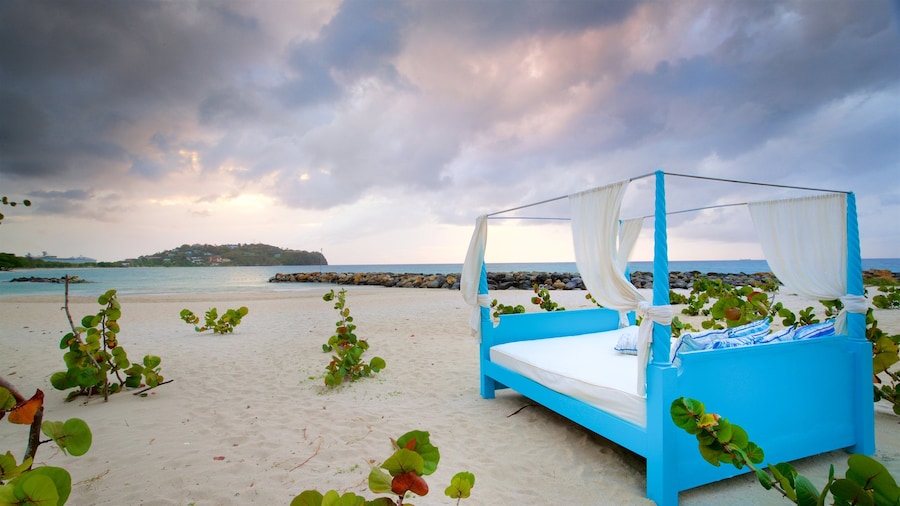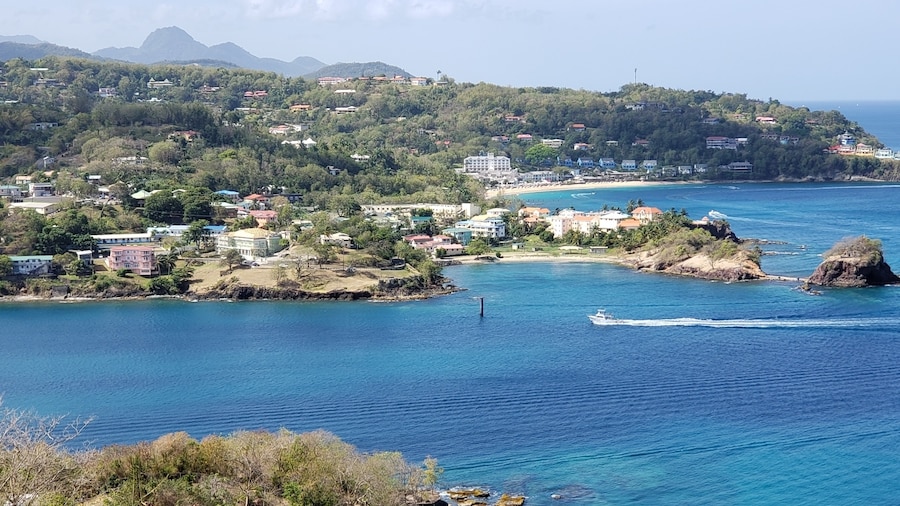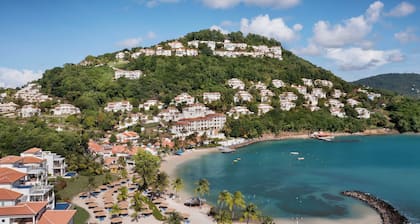Pigeon Island National Park is a former island that contains intriguing historic sites spread across a hilly terrain. The picturesque 44-acre (18-hectare) park has a fascinating past, entwined with tales of sailors, fleets and raids. Embark on the labyrinth of forested trails to reach the various forts dotted around the park.
Gaze up at the two dramatic peaks that rise above this former island. Reach the iconic Fort Rodney on the smaller peak in the southwestern corner of the park. The structure, which is named after British Admiral George Rodney, was used by British settlers to spy on French ships from nearby Martinique. Make your way to the 18th-century Military Ruins for the vestiges of another British fort. The deteriorating brick walls and windows still stand today.
Ascend to the taller summit of Signal Peak for excellent views of the Caribbean Sea and the surrounding verdant hills. Relax with snacks and drinks at one of the bars and restaurants at the entrance to the park. Try a cross between snorkeling and scuba diving with the SNUBA Adventure Tour beside the pier at the park’s southern end.
Attend the annual St. Lucia Jazz Festival, which takes place in mid-May. Over the years, it has hosted such artists as Rihanna, Elton John and Santana.
Note that the area is no longer an island, having been artificially joined to the mainland in 1972 by a causeway. The former islet was used by French pirate Jambe de Bois as a base to raid Spanish ships. The British later expelled the indigenous Caribs from these parts.
Pigeon Island National Park is on a promontory that juts out from the northwestern corner of the island of St. Lucia. It is in the western outskirts of Gros Islet and can be reached via a short taxi journey. See nearby sights, such as Pigeon Island Beach, Splash Island Water Park and Reduit Beach.

